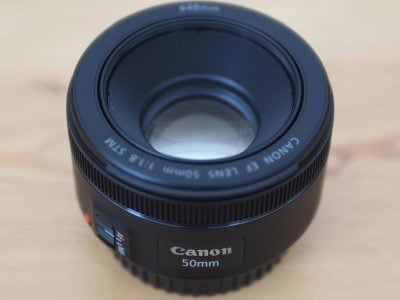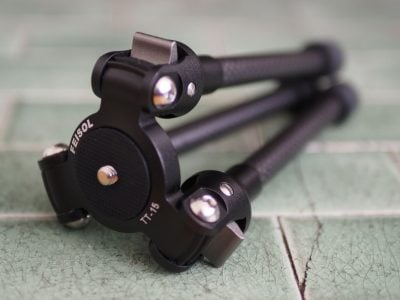Panasonic Lumix DMC-LX3
-
-
Written by Gordon Laing
Panasonic Lumix DMC-LX3 design and controls
With its smart looks, the Panasonic Lumix DMC LX3 is immediately recognisable as a Panasonic compact, and the core design will be familiar to anyone who knew the previous Lumix LX2 and LX1 models. We’ve pictured it below alongside what’s likely to be one of its biggest rivals: Canon’s PowerShot G9, a model recently replaced by the G10. Both the Lumix LX and PowerShot G series are targeted at enthusiasts who demand high-end features and full manual controls from their compacts.
 |
Like its predecessors, the LX3 is noticeably smaller than Canon’s PowerShot G series. The LX3’s main body measures 109x60x27mm to the G9’s 106x72x43mm and it’s obvious from the photo above how the G9 is both taller and thicker. The G9’s lens does however only protrude 5mm from the front surface when powered down, compared to the 18mm of the LX3; indeed with this taken into account, both cameras are roughly the same at their thickest points. The G9 also sports a built-in sliding lens cover, whereas the LX3 requires a lens cap which adds a further 5mm to its thickness.
The new LX3 is 45g heavier than its predecessor when both are fitted with their respective batteries: 265g for the LX3 compared to 220g for the LX2. This still makes the LX3 noticeably lighter than the Canon PowerShot G9 though, which feels very dense at 363g including its battery.
 |
The LX3’s grip is roughly the same depth as that on its predecessor, but now runs the entire height of the body, making it easier to hold onto. We personally found it preferable to the modest rubber strip you’ll find on the Canon G9, although the latter is more effective than it looks in use. Raised dots on the rear of the LX3 act as a thumb rest, and the combination allows you to hold the camera relatively securely with one hand, although for the best results you’ll still really need to use both.
The build quality, like all Panasonic compacts, is superb with solid construction and smooth joins without any creaks. In terms of materials and construction it’s roughly equivalent to Canon’s G9, although the Canon’s additional weight and brick-like design gives it the impression of being sturdier. Note unlike the G9, there’s no underwater housing available for the LX3.
 |
The Lumix LX3’s control layout is very similar to its predecessors, and again anyone familiar with the LX line will be immediately at home here. So you’ll still find a switch on the top of the lens barrel which lets you adjust the aspect ratio between 4:3, 3:2 and 16:9, more of which on the Features page. Another switch on the left side of the barrel as you hold the camera sets the focusing mode between AF (normal range), AF (Macro range) and Manual focus, again more of which on our Features page.
The decent-sized shutter release, zoom rocker, power switch and mode dial on the upper right surface are virtually unchanged, although the button dedicated to setting the Stabilisation mode on the LX2 is now used to quickly autofocus the lens when the LX3’s set to Manual Focus.
 |
There’s also some changes on the mode dial itself. Along with full Program, Manual, Aperture and Shutter Priority modes, you’ll now find a position for Panasonic’s latest Intelligent Auto, and two Custom settings. Completing the line-up is the Movie Mode and a SCN position which allows you to access the various scene presets via an on-screen menu.
Round the back of the camera, there’s the usual four cross-keys although now with some functional variations. Pushing left or right sets the self timer and flash mode, but the down button has now become a programmable Function control, which can be configured to either review the last photo taken (the default option), adjust the LX3’s Film mode, sensitivity, white balance, metering, AF, or Intelligent Exposure mode.
The up button is labelled exposure compensation, but pressing it twice or three times fires-up menus for Auto Bracketing and Flash Compensation respectively. The Auto Bracket lets you shoot three frames up to +/- 1EV apart.
 |
 |
Below the cross keys are two further buttons, one for switching the display mode and the other to set the continuous shooting mode or delete images. Pressing Display during Auto Bracketing switches between that and the LX3’s Multi Aspect mode which captures three frames at each of the aspect ratios with a single button press – this was previously a scene preset on models like the Lumix TZ3.
 |
Above the cross keys is the tiny joystick which you’ll find on many higher-end Lumix compacts. Push this in and you’ll fire-up the superimposed Q.Menu that’s common to all of Panasonic’s 2008 compacts, more of which below. Like Panasonic’s other compacts with manual control, the joystick also doubles-up for adjusting certain settings, indicated by icons on the screen. In Program mode it can be used for adjusting exposure compensation; switch to Aperture or Shutter Priority and it will adjust the Aperture and Shutter respectively, while and manual it can be used for both.
In use it works well once you understand the on-screen icons indicating it should first be pushed right or left before then pushing up or down to actually change the setting. The tiny size of the joystick can also make it quite fiddly for those with bigger hands, so we’d recommend you try it in person if you anticipate any problems.
Panasonic Lumix DMC-LX3 exposures and creative modes
The Panasonic Lumix DMC-LX3 offers shutter speeds from 1/2000 to one second in Program or Intelligent Auto, 8 seconds in Aperture or Shutter Priority, or an impressive 60 seconds in Manual or the Starry Sky preset. There’s also 13 aperture settings at its disposal, and impressively for a compact, you have complete control over both them and the shutter speed in Manual, Aperture or Shutter Priority modes.
 |
 |
Unusually while most compacts with manual control over exposure prevent you from using the maximum apertures beyond certain high shutter speeds, the LX3 really does give you complete control. So while models like Panasonic’s own FX500 only allows a maximum aperture of f4, f5.6 and f8 at shutter speeds of 1/1300, 1/1600 and 1/2000 respectively, the LX3 lets you use its maximum f2.0 aperture all the way up to 1/2000, and equally all the way down to 60 seconds.
 |
 |
As mentioned above, the mini joystick on the back of the camera is used to make exposure adjustments. In Aperture or Shutter Priority modes, simply push the joystick right, then up or down to adjust the settings, or push it left to adjust the exposure compensation instead. In Manual mode push left to select the f-number, then up or down to adjust it, or push right to select the shutter speed, and again up and down to adjust it. Once you understand the on-screen icons indicating you need to push left or right first, it works well, although the joystick can be fiddly for those with larger hands.
Note the LX3 like other Panasonic compacts has a menu option to set the lowest shutter speed available in the automatic modes. By default this is set to 1/8, but you can reduce it to one second, or increase it to 1/250 if desired.
The LX3’s full manual control is complemented by the choice of 24 scene presets (selected on-screen after choosing SCN from the mode dial). Two new presets for the LX3 are Film Grain and Pinhole, the former giving grainy black and white images and the latter simulating the effect of using a pinhole camera with heavy vignetting (darkening in the corners).
 |
 |
Last but not least is the LX3’s Intelligent Auto mode, labelled iA on the dial. Like other 2008 Lumix compacts, the LX3’s Intelligent Auto mode employs Intelligent Scene Detection, Intelligent ISO and Intelligent Exposure, along with the Optical Image Stabiliser, face detection, quick AF and digital red-eye correction modes. Intelligent Scene Detection first identifies if the composition falls into the Portrait, Scenery, Macro, Night Portrait or Night Scenery categories, and if so, selects that scene preset. If it doesn’t match any of them, a standard shooting mode is used.
Next Intelligent ISO detects any motion in the frame and if necessary increases the ISO to achieve a shutter speed which will eliminate any unwanted blur. Finally, the latest Intelligent Exposure mode, new to the 2008 range, actually adjusts the ISO over different portions of the frame. This first divides the frame into around 3000 areas, then finds the brightest portion and exposes for it using the lowest sensitivity. Then it increases the gain in the darker portions of the frame to boost detail in shadow areas.
 |
While the idea of having different sensitivities on the same image sounds unusual, it’s not actually that different in practice to other dynamic range optimisation systems which digitally increase the brightness in darker areas. The result is also similar, where shadows are boosted, but at the cost of more visible noise in those areas.
Note Intelligent ISO and Intelligent Exposure (adjustable by three levels) are optionally available in some of the LX3’s normal shooting modes; they’re off by default though.
In practice the combination of technologies which comprise the LX3’s Intelligent Auto mode work uncannily well. We repeated a test used on previous Lumix models and found the LX3 switched to Landscape mode when pointed at a distant mountain, adjusted itself to Macro when moved toward a close subject, then fired-up its Portrait preset with Face Detection when turned to people. It continues to be by far the cleverest fully automatic mode we’ve tested, exploiting the camera’s full range of technologies, and we’d happily recommend it for day-to-day use and spontaneous shots.
Then when you want to be more specific or creative, simply select from one of the 24 scene presets on offer or of course switch to Program, Manual, Aperture or Shutter Priority. Either way, the LX3 has it all covered.
Panasonic Lumix DMC-LX3 Flash
 |
 |
The Panasonic Lumix DMC-LX3 has a small built-in flash which, like the LX2 before it, is manually popped-up using a switch on the far left side of the top surface. It’s smaller than that on the Canon G9, but when raised for use is slightly further from the lens axis, thereby better avoiding red-eye.
With the flash manually popped up and the LX3 in Program mode, you can choose from Auto, Auto with red-eye reduction, Forced on and Slow sync with red-eye reduction. If you want to prevent the flash from firing, simply push it back down into the housing; it can’t popup on its own accord. Flash compensation is available by pressing the up button until the Flash menu appears; you can additionally set a rear-curtain sync if desired.
 |
 | |
New to the Lumix LX3 over its predecessor is a flash hotshoe, onto which you can mount the optional DMW-FL360 or DMW-FL500 flashguns. These are the same models available for Panasonic’s full-size DSLRs and equip the LX3 with much greater range than the built-in model.
Since the LX3 is quite small and light though, it can feel a bit top-heavy with a larger flashgun mounted, so if this is something you think you’ll be doing regularly, we’d advise trying it in person. Either way, it’s great to see a hotshoe on the LX3, and it finally brings the LX series in-line with the Canon PowerShot G series.
Panasonic Lumix DMC-LX3 Screen and menus
The Panasonic Lumix DMC-LX3 is equipped with a 3in screen with 460k pixels. While the size and resolution are the same as that of the TZ5, the aspect ratio is actually wider at 3:2 – as such the LX3’s screen is a little wider and shorter than the 4:3 screen on the TZ5.
 |
Like the TZ5 though, the 460k resolution is a step up in detail over standard 230k screens – it corresponds to an increase in resolution from 320×240 to 480×320 pixels. It’s not as big a leap as the jump to the 920k, 640×480 pixel displays on many new DSLRs we’re seeing right now, but it’s still a welcome improvement, especially in playback.
 |
The LCD Mode option in the Setup Menu lets you manually set the screen to high brightness for easier viewing under bright conditions, or have the LX3 perform the adjustment automatically – in practice this works well. Note the High Angle option of previous Panasonic compacts which adjusts the screen to become more easily viewable when the camera’s held above your head is absent here.
Like previous LX-series models, composition is with the screen alone by default, although Panasonic now offers the optional DMW-VF1 optical viewfinder which clips onto the hotshoe. This may be preferred for some situations, but unlike the optical viewfinders built-into models like Canon’s G9 and G10, its coverage is fixed to wide-angle and won’t zoom.
 |
 |
 |
|
But back to the screen. Pressing the Display button cycles between detailed shooting information, a clear view with no information and one with an alignment grid. Menu options allow you to choose a different grid pattern and also to show a live histogram over both the recording info and grid screens if desired.
 |
Like previous models, Panasonic splits (and often duplicates) its various settings over the super-imposed Q.Menu and a more conventional paged menu system. Pushing the joystick in fires-up the Q.Menu which overlays a drop-down styled menu over your live composition with context-sensitive options.
With the LX3 set to Program recording mode, you can adjust the Film mode, Metering mode, AF mode, White Balance, Intelligent ISO, Sensitivity, Intelligent Exposure, resolution and LCD brightness mode. Options including compression quality and image stabilisation are now exclusively found in the main menu system. In use the Q.Menu works very well, giving quick and easy access to some of the more common settings.
 |
 |
Pushing the Menu button in Program mode presents, five pages of recording options and six setup pages; many of the common options like sensitivity and white balance are duplicated in the Q.Menu system.
 |
 |
With the LX3 switched into playback mode, the Display button cycles between a clean image and ones with varying degrees of detail – if you have Histograms enabled in the setup menu, one will appear in the third screen.
Pressing the Menu button during playback presents a number of Mode options including Dual Display which as its name suggests, shows two images simultaneously for easy comparison. In theory this is really no different from a thumbnail mode which only shows two pictures, but Panasonic cleverly flips them on their side so you use the screen in a portrait orientation to maximise their reproduction.
 |
 |
In the main Playback menu options you can also resize, trim, rotate, and new to the LX3, apply fine rotation with the Levelling option – this lets you rotate by +/- 2 degrees in 0.2 degree increments with an overlaid grid to help with alignment. You can additionally categorise images for themed slideshows if desired.
 |
Panasonic Lumix DMC-LX3 Battery and connectivity
A single small door on the right side of the body opens to reveal a DC-input, a combined USB / AV port, and a component output for the optional DMW-HDC2 cable. With this cable the LX3 will output a 1080i signal for HDTVs (with HD movies scaled from their native 720p). A larger door under the grip side of the body houses the battery and SD memory card slot.
 |
The Lumix LX3 is powered by a CGA-S005E 1150mAh Lithium Ion battery pack and supplied with a mains recharger. Panasonic claims each charge is good for 290 shots under CIPA conditions, but like other Lumix compacts we found that estimate a bit optimistic. If you have the image stabiliser, continuous AF and auto LCD activated, you can burn through the battery in less than half that time, so investing in a spare would be advisable.



